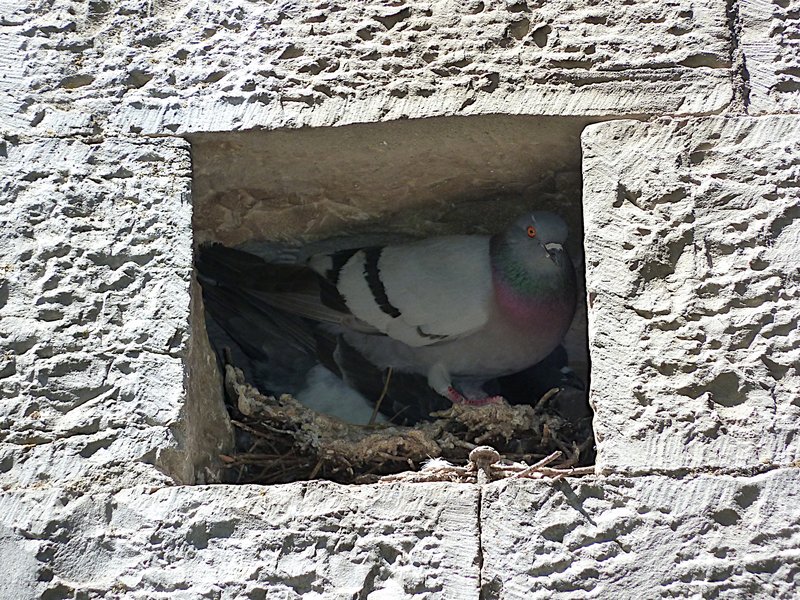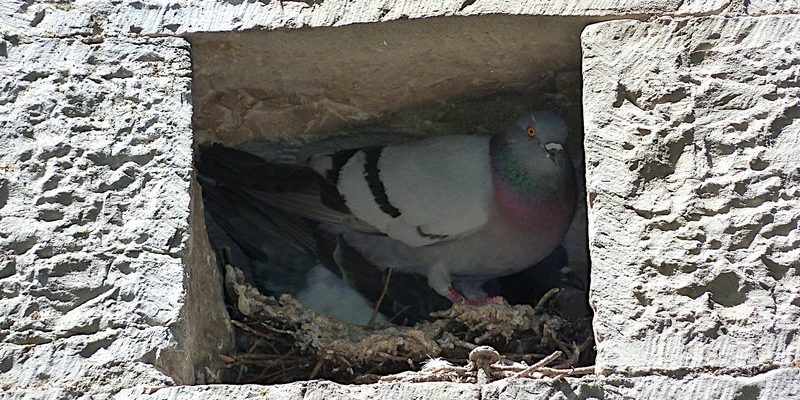
Rock pigeons are like the ultimate urban survivors. They thrive in cities where other wildlife might struggle, mostly because they adapt so well to human environments. Much like how a cozy café becomes a second home for a freelancer, these pigeons have found comfort in our buildings and parks. They’ve created a unique lifestyle that revolves around our activities while maintaining their natural instincts. So, how does their nesting process work? And what does it look like from hatchlings to fully formed adults? Let’s explore!
Understanding Rock Pigeon Nesting Habits
Rock pigeons are fascinating in how they choose their nesting spots. Unlike some birds that meticulously build their nests, rock pigeons keep it simple. They prefer to nest on ledges, rooftops, and other raised areas that offer safety from predators. You might see them tucked between bricks or under eaves, choosing locations that mimic their natural habitat of rocky cliffs.
Here’s the thing: rock pigeons don’t like to travel too far from their nests. They are territorial and often return to the same spot year after year. This may help explain why you often see the same pigeons in your neighborhood day after day. They’ve staked their claim!
When it comes to materials for their nests, rock pigeons are resourceful. They usually use twigs, grass, and even bits of trash they find lying around. It might not win any interior design awards, but it works for them! This simple approach is ideal for urban dwellers because it allows them to construct nests quickly and efficiently.
The Mating Ritual
Before rock pigeons settle down to nest, they engage in a unique courtship display that’s quite entertaining. Males puff up their chests, bow deeply, and coo to attract females. It’s almost like they’re saying, “Look at me! I’m the best partner you could ask for!” This display can be quite theatrical, and if you catch a glimpse, it’s hard not to chuckle at their antics.
Once a female shows interest, they pair off, often forming monogamous bonds for life. You might be wondering if they really stay together forever, and the answer is yes—most pairs will remain partners year-round. They support each other during the nesting phase, helping to protect the eggs and eventually the chicks. Such teamwork is a highlight of their breeding habits!
The Nesting Process
After the courtship, it’s time to lay eggs. Rock pigeons typically lay a clutch of two eggs, which are usually white or cream-colored. The female lays the eggs a couple of days apart, so they hatch around the same time. This is key because it means both chicks can grow and develop together, relying on their parents for food in their early days.
Both the male and female share incubation duties, usually for about 18 days. This isn’t just a lazy sit-and-wait job; they take turns keeping the eggs warm and protected. If you see a pigeon sitting quietly on a ledge, know that it’s likely a very dedicated parent!
Life After Hatching
Once the eggs hatch, the real work begins. The tiny chicks, often called squabs, are covered in soft down and are completely reliant on their parents for nourishment. Here’s where it gets interesting: rock pigeons produce a special nutrient-rich substance known as “pigeon milk.” This isn’t milk in the traditional sense but a secretion from the parents’ crops. They regurgitate this “milk” to feed their young for about three to four weeks. It’s a bonding experience that plays a significant role in the squabs’ early development.
During this time, the squabs grow rapidly. They start to develop feathers and become more independent, eventually leaving the nest when they’re about four to six weeks old. Even then, they often stay close to their parents, learning the ropes of foraging and survival in the urban jungle. It’s like a young adult moving back in with their parents to save on rent—there’s comfort in familiarity!
The Role of Rock Pigeons in the Ecosystem
Now, you might wonder why understanding rock pigeons really matters. Well, these birds play an important role in their ecosystem. They contribute to the food chain, providing sustenance for predators like hawks and falcons. Plus, they help with seed dispersal through their droppings, which can contribute to plant growth. So, every time you see a pigeon, remember that while they might just look like a nuisance in the park, they’re part of a bigger environmental picture.
Furthermore, their adaptability teaches us a lot about resilience. Rock pigeons thrive in cities, showcasing how wildlife can adjust and cope with changing landscapes, often shaped by human activity. By observing these birds, we get insights into ecological balance and the importance of preserving natural habitats.
Challenges Rock Pigeons Face
Like any other species, rock pigeons face several challenges. Urban environments, while comfortable, can also pose threats. Predators, pollution, and food scarcity are all issues these birds must navigate. Not to mention, their nesting sites are sometimes disturbed by construction or human activities—which can disrupt their breeding cycles.
However, these challenges also highlight their tenacity. Rock pigeons have shown incredible adaptability, learning to find food and shelter in increasingly urbanized settings. They are living proof that resilience is key when it comes to survival.
Rock pigeons may seem like everyday birds, but their nesting habits and lifecycle are full of intriguing details. From their playful courtship to the unique way they nurture their young, these birds are remarkably resourceful and adaptable. They remind us that even in our bustling cities, nature has a way of carving out its space and thriving.
So, the next time you see a rock pigeon, take a moment to appreciate its story. Whether it’s choosing a cozy ledge to nest on or raising a new generation of squabs, these birds are a remarkable part of our urban ecosystem. Embrace the wonder and complexity of the rock pigeon—after all, there’s so much more to them than meets the eye!

